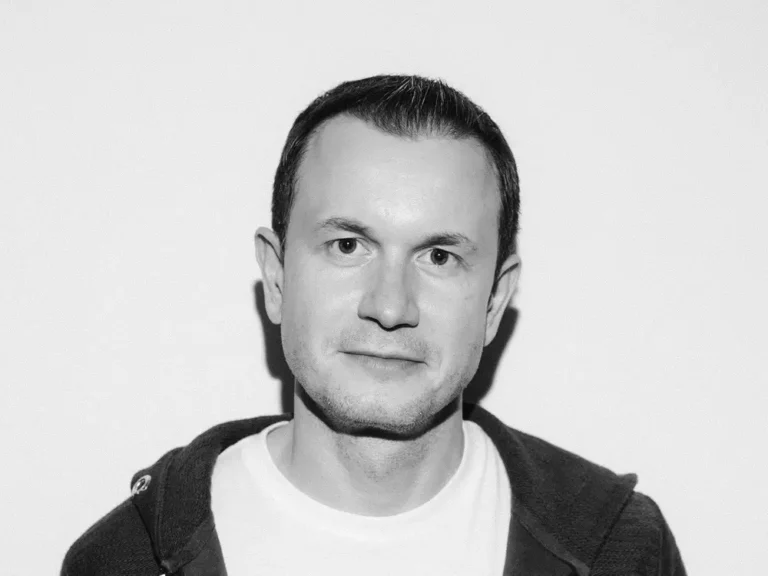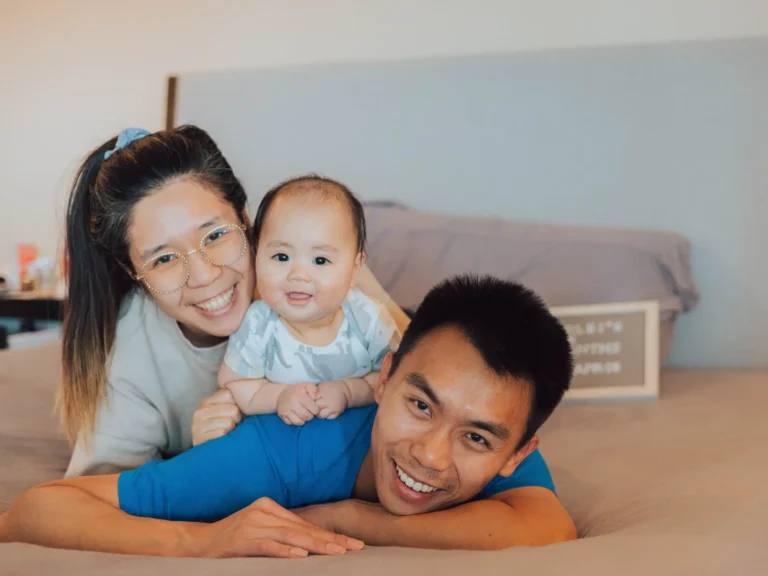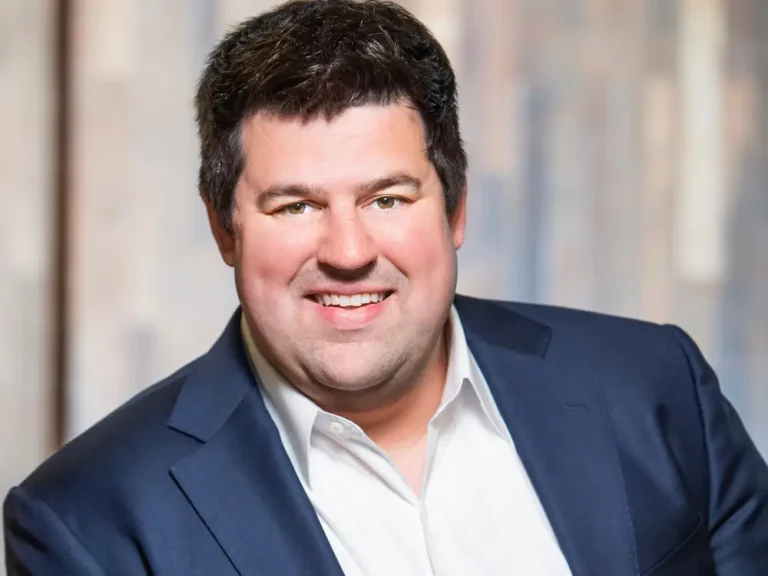How 3 friends without any hospitality experience started renting out over 400 tiny homes in remote locations around the world

Adrian Chia is one of the three cofounders of Big Tiny, a tiny-home startup.
How nice would it be to leave everything behind, unplug from the world, and relax abroad?
This thought lingered in Adrian Chia’s mind after a two-week family vacation exploring the Great Ocean Road in Melbourne, Australia, in 2016.
Shortly after returning home to Singapore, he floated the idea of living an unplugged life by his friend Dave Ng, whom he’d met in his 20s during mandatory national service.
“We were just chitchatting, but Dave started thinking about it seriously,” Chia, 43, told B-17. Ng came up with the idea of creating a tiny house on wheels — a mobile home that could be easily relocated if a particular location didn’t attract guests.
In 2017, the pair decided to sell their businesses — Chia had been working in IT and Ng in waste management — and start a tiny-house business called Big Tiny. They invested 100,000 Singapore dollars, or about $77,000 each, and dove into brainstorming their first prototype.
“I knew I was venturing into uncharted territory,” Chia, who was married with two young kids and had a newborn at the time, said.
An early obstacle
With no experience in architecture or building, their first roadblock was figuring out how to build a tiny house.
“I can’t even change the door knob at home,” Chia said, adding that the thought of having to fit a kitchenette, a bedroom, and a living room into a 20-foot space was daunting.
They hired an architect to help with the design of the house and agreed on a few essentials. First, the house had to be on wheels. Next, they had to ensure that the house did not feel claustrophobic.
Six months of trial and error later, Chia and Ng assembled the first prototype home in Chia’s garden in Singapore.
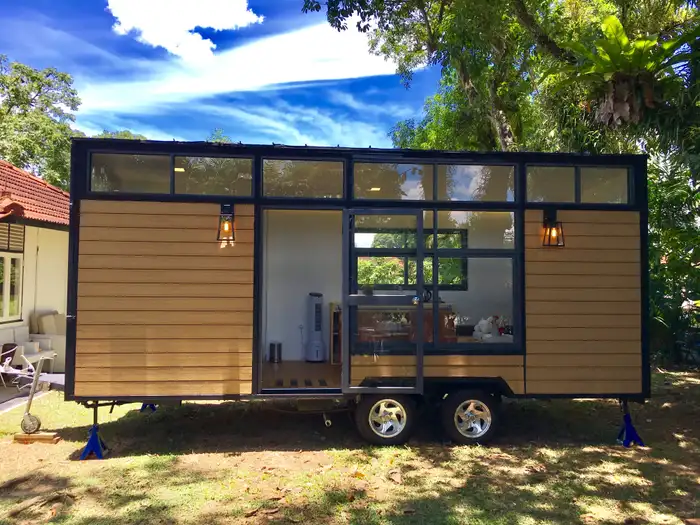
The friends built the first tiny home in Chia’s backyard.
They began scaling the business by sending tiny houses overseas. The first two were sent to Australia — one to Victoria and the other to New South Wales.
In 2018, Chia convinced a friend from elementary school, Jeff Yeo, to join the team of founders and help with branding. Yeo had worked as an account director and manager at several marketing agencies.
Together, they raised about SG$4.2 million over two funding rounds, including SG$3.8 million in the second round in 2021.
Developing their tiny houses into a profit-sharing business
After garnering attention from local media, the team started to receive inquiries on how to purchase tiny houses, Chia said.
In 2017, they started a program that allowed people to buy a tiny house for about SG$90,000. In return, they managed the hotel side of the business by renting the unit back from the buyer. They either rented the tiny house for two years and paid 8% a year or for five years and paid 10% a year. Big Tiny then earned a profit from nightly stays, Chia said.
Though the company headquarters is in Singapore, Big Tiny’s first move was to send tiny houses out to the rest of the world. The homes had a modular design — flat-packed “like Ikea furniture,” Chia said.
In 2023, they set up tiny houses in Singapore
The tiny-house movement encourages minimalistic and sustainable living. Though the movement has taken off in countries such as the US and Germany, it has been less popular in Singapore.
In 2021, an opportunity arose for Big Tiny to set up houses in Singapore under a government initiative promoting innovative business ideas.
The government awarded Big Tiny state land, for which the company pays rent, to build their tiny houses on Lazarus Island — one of the eight Southern Islands in Singapore.
“We jumped on it,” Chia said.
In an email response to BI, a representative from the Sentosa Development Corporation, an organization under Singapore’s Ministry of Trade and Industry, said the initiative aimed to complement the existing environment of Lazarus Island by introducing “light-touch” recreational uses.
The representative added that Big Tiny’s houses were equipped with sustainable features, which were in line with their goal of reducing vacationers’ carbon footprint on the island.
The government awarded another company a chance to build nine tents nearby.
Since opening the tiny house resort in April 2023, Chia said it’s been running at about 90% occupancy on average. Guests have to book a few months in advance to secure their stay. He added that they’ve been cash-flow positive since their inception.
Last month, a BI reporter was able to book a stay less than three weeks in advance for SG$380 a night, though only a few tiny houses remained available at the time. All the houses were full during the reporter’s stay.
Each tiny house is placed in nature

Big Tiny’s tiny home in Lake Stella, New Zealand.
Seven years on, Big Tiny has placed more than 400 tiny houses in more than 10 countries worldwide, from Taiwan to Europe and Australia.
On Singapore’s Lazarus Island, guests are surrounded by lush greenery and can swim in the sea. At Lake Stella in New Zealand, two hours north of central Christchurch, guests can hike the surrounding mountains or take a dip in the lake. In Yilan County, Taiwan, guests can sleep in a tiny forest cottage and gaze at the stars when night falls.
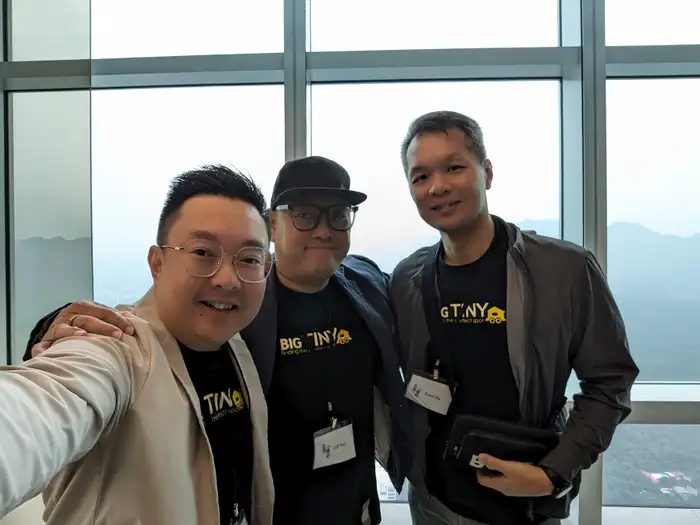
Chia with his cofounders, Jeff Yeo and Dave Ng.
Working with friends can be challenging
Looking back on the journey, Chia said he learned that ideas never come fully formed. “When I was speaking with Dave, it was just an idea of putting tiny houses in rural areas so that people can recharge themselves in nature,” he said.
He said they never thought they could build tiny houses in his own garden — let alone transport them worldwide.
And though working with close friends can be tricky, Chia credits their successful collaboration to clearly defining their roles.
Chia oversees revenue and strategic development, Ng heads operations and production, and Yeo focuses on branding.
“Whenever we face problems, we will call for a discussion. Everyone will have ideas on how to get things resolved,” Chia said.
“But at the end of the day, the person leading the aspect of the business will take ownership and decide on what is the best course ahead.”

